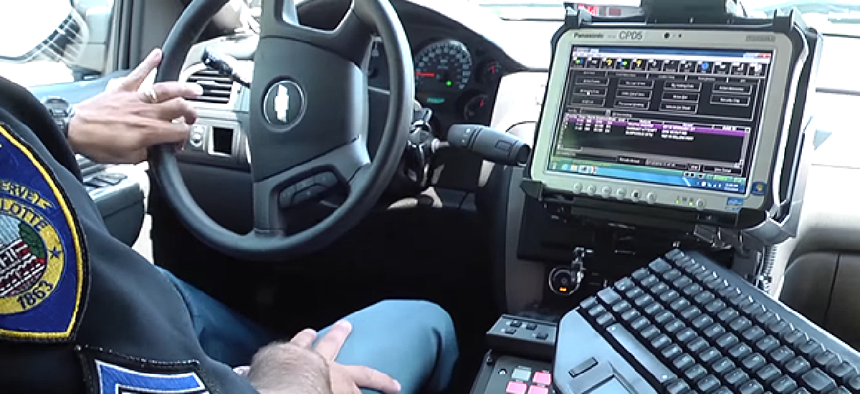How Charlotte built a 4G public safety infrastructure with room to grow

Connecting 950 police and fire public safety vehicles, the secure network is intended to provide desktop-like access to mobile officers.
When the Charlotte-Mecklenburg Police Department was still using 3G modems on its laptops in cruisers, connectivity issues often forced officers to pull over so they could connect to the city’s network. Wi-Fi was similarly spotty, making access to computer-aided dispatch (CAD) systems unreliable for the City of Charlotte's fire department. Not surprisingly, that kind of public safety infrastructure couldn’t reliably run mapping apps or facilitate image posting -- let alone video.
Charlotte officials wanted to improve the speed, general usability of the systems already in place and build a public safety network infrastructure that could support video transmission and whatever came next. But that would take a significant investment.
Originally, the city intended to use a 2010 grant from the federal Broadband Technology Opportunities Program to fund the infrastructure overhaul, but it was unable to reach an agreement for wireless spectrum management with the First Responders Network Authority (FirstNet) national broadband safety network, which was required under the terms of the BTOP funding.
So when the city restructured the project in December 2013 to account for changes in funding and publicly available LTE capacity, it looked for a private-sector solution for a 4G network that would meet its immediate needs, give it room to grow and accommodate FirstNet -- the nationwide, congressionally mandated interoperable broadband network for first responders -- when it deploys.
In August 2014, a 100-member team of employees and contractors began work on the project, which took nine months to complete and more than 20,000 man-hours of work. The total project cost was approximately $11.2 million, with $8 million funded with the restructured BTOP grant and $4 million from the city of Charlotte in cash and in-kind contributions.
The project included updating the network infrastructure to support video transport in 44 fire stations, 14 police departments and two data centers. Mobile data terminals were replaced with laptops and tablets, and 950 police and fire public safety vehicles were outfitted with multi-band routers, wiring and antennas for 4G LTE connectivity.
The city currently uses Verizon as its carrier, but if Verizon’s coverage isn’t strong enough in a certain area, the router -- which supports an additional cellular card -- will automatically flip to a different carrier, said Randy Moulton, Charlotte’s chief security officer.
This system also future-proofs Charlotte for FirstNet. “All we have to do is get the FirstNet card, plug it into the router, and [the first responders are] on FirstNet, so we’re not forklifting equipment,” said Moulton.
The network allows police officers to manage paperwork faster, complete periodic training and view videos in their cars, reducing trips to the division office. “They’re spending more time doing police work rather than troubleshooting their computers,” Moulton said, “and they’re able to do the administrative side of their job much faster and from their vehicles versus the office.”
Building in enough capacity for video was also important to the city, which demanded the network provide enough bandwidth to minimize buffering and jumpiness, especially for police in the field.
Nelson Baker, Mecklenburg County project manager, said video capabilities were the baseline for the infrastructure, “to make sure it can handle those future applications.” (Mecklenburg County is home to the City of Charlotte, and many services are shared across the city and county governments.)
Charlotte installed wireless-enabled Panasonic ruggedized and semi-ruggedized Toughbook laptops and Toughpads tablets in public safety vehicles, replacing the old mobile data terminals. From the laptops in their vehicles, officers can monitor any live camera feed in the city, easily watch videos online, feed live video into police command centers and conduct video conferencing calls.
The network also gives first responders a fast, two-way communication channel with dispatchers and provides real-time location-based data through geographical information systems. In fact, by the time responders make their way to their fire engine, their laptops already have incident-related information loaded, including location, the quickest route, any incident changes, the option to request more help and the ability to find additional needed information. The real-time access also means police officers can locate people wearing electronic monitoring devices if an incident occurs.
While data storage systems were not part of the project, most of the city’s data is hosted within city data centers, and the 4G LTE network gives public safety personnel ready access to it.
According to Moulton and Baker, so far, Charlotte’s optimization of its enterprise public safety infrastructure has been a great success, starting with its ability to be a solid foundation for the future.
“The way I look at it, is instead of us going forward and building an LTE network, which would be a pilot for FirstNet, Charlotte was able to use the grant to take advantage of internalizing their infrastructure to be ready for that FirstNet,” said Baker.





